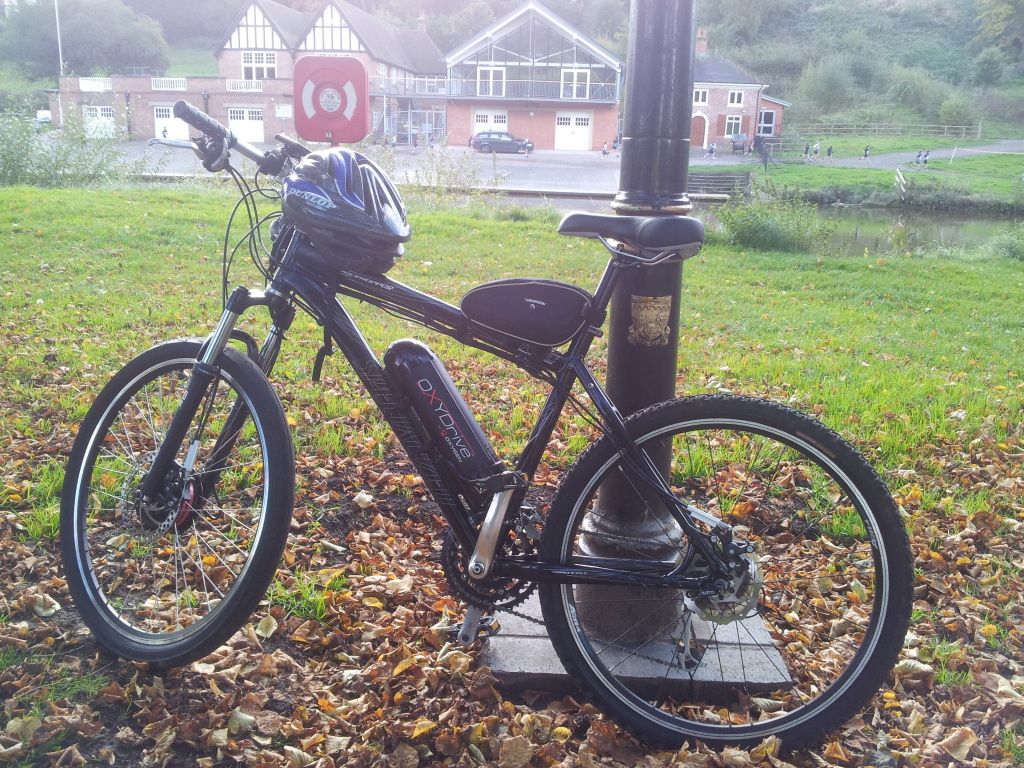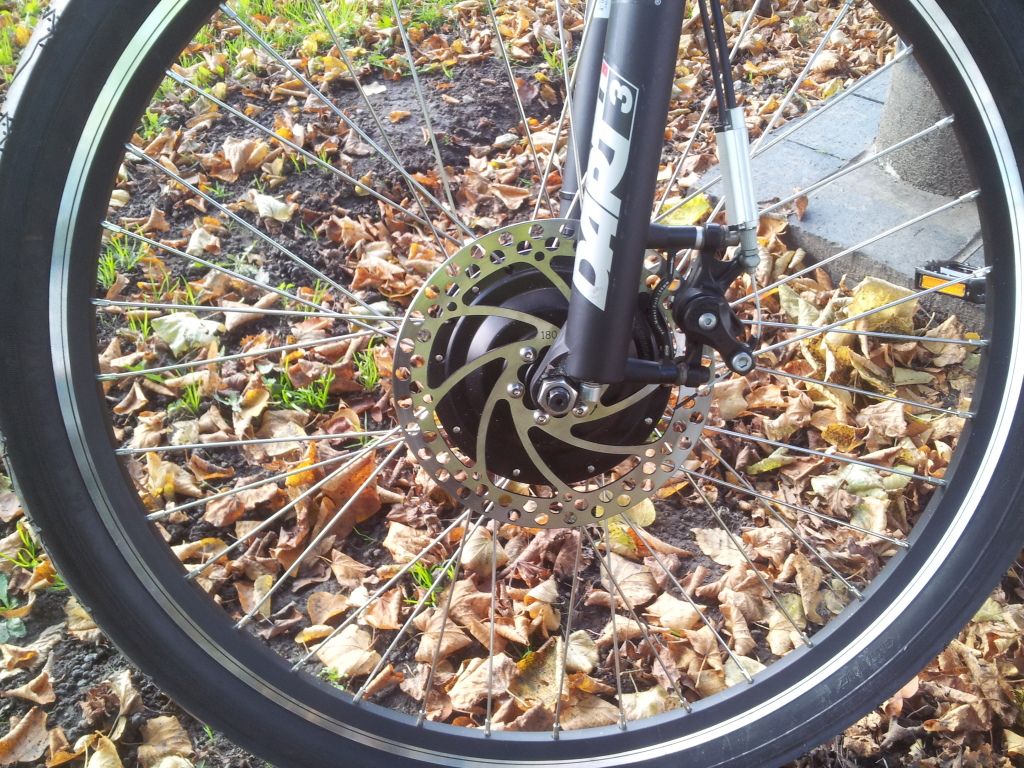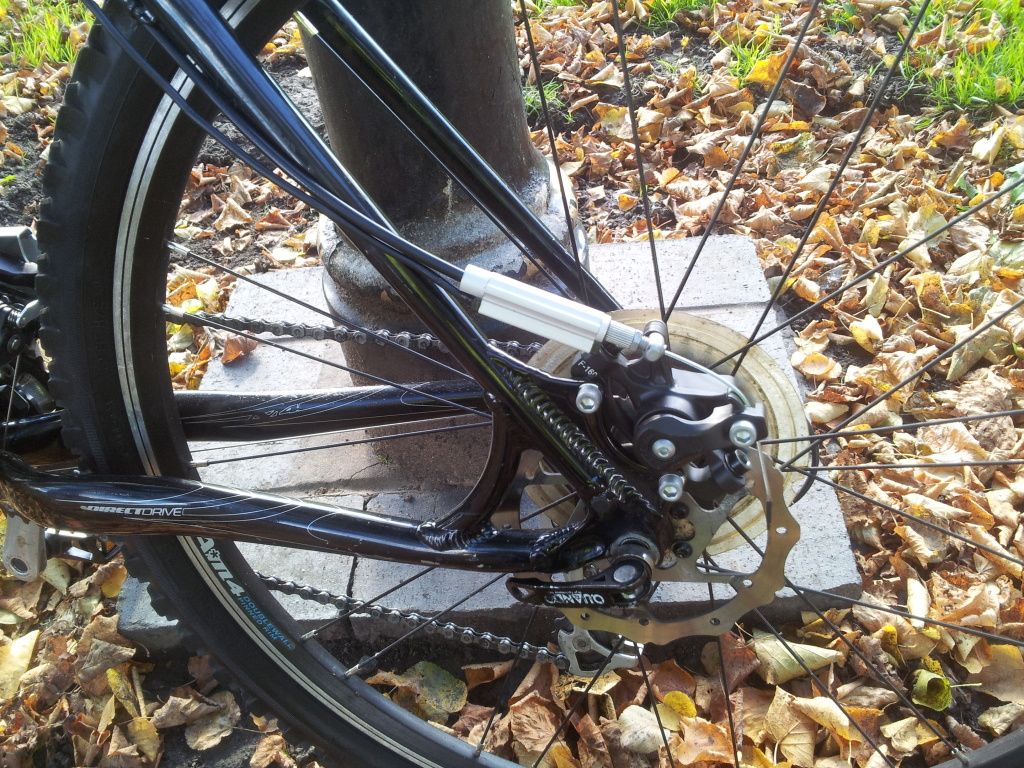D
Deleted member 4366
Guest
I finally got round to fitting my Oxydrive kit. I won't bore you with all the details of the kit because you can find those fron the website and Andrew's video.
OXYDrive - electric bike conversion kit
OXYDRIVE electric bike kit what's inside the box.wmv - YouTube
I had a spare frame lying round off a Specialized Rockhopper Pro off which I had stripped everything to make my Giant NRS. I also had a new pair of Rockshox Dart 3 forks and a few other bits and pieces. I managed to find some used Deore XT mechs, chain and changers locally for £90, so I then had enough to get started.
First step was to fit the motor in the forks. The forks have 9mm drop-outs so I had to widen them a bit woth my Dremmel and I chose to deepen them a bit to re-centralise the axle. When I tested it, it span freely, but I could hear a ticking noice, which was the motor just touching the fork leg. This wouldn't have happened if I hadn't deepened the drop-outs so far. Solved by making a 0.5mmwasher, which kept the leg clear.
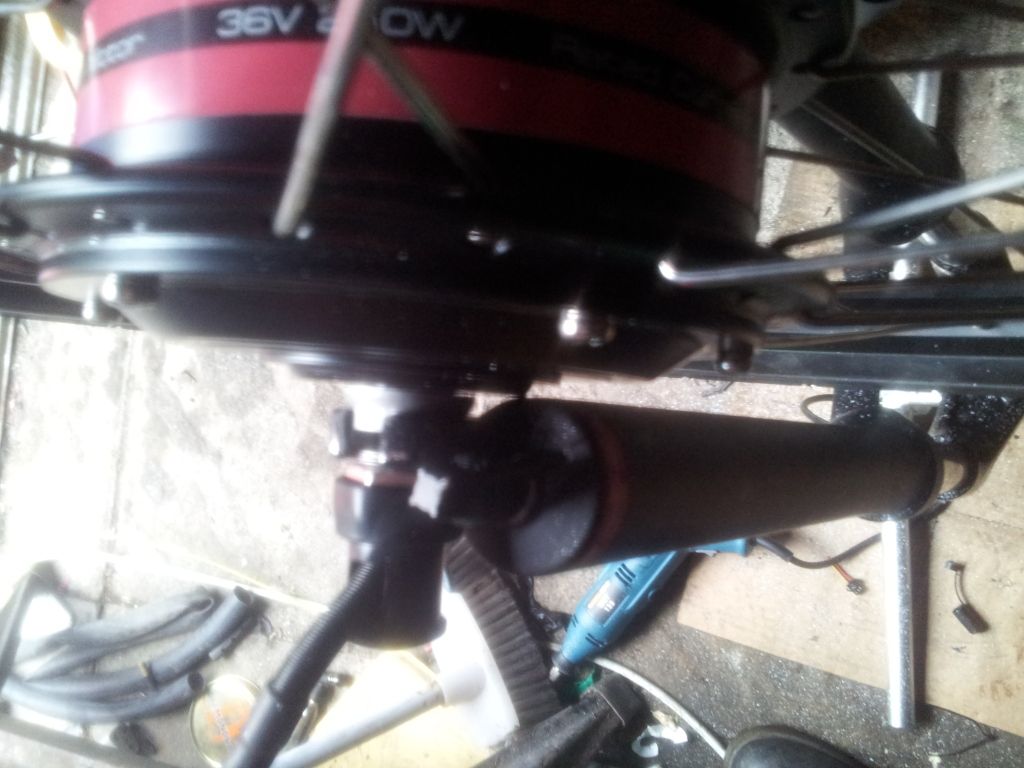
The rest of the installation was very straight-forward. I had a 113mm BB assy, but when I tried it there wasn't room for the magnet disk, so a quick trip to Halfords and I had a 122mm one for £10. I got some pedals there while I was at it (£14)
Next, where to put the throttle. I tried lots of positions, but none were idea. Then I realised that the gear indicators on the changers were removable, which gave a perfect solution with the throttle right next to the grip.
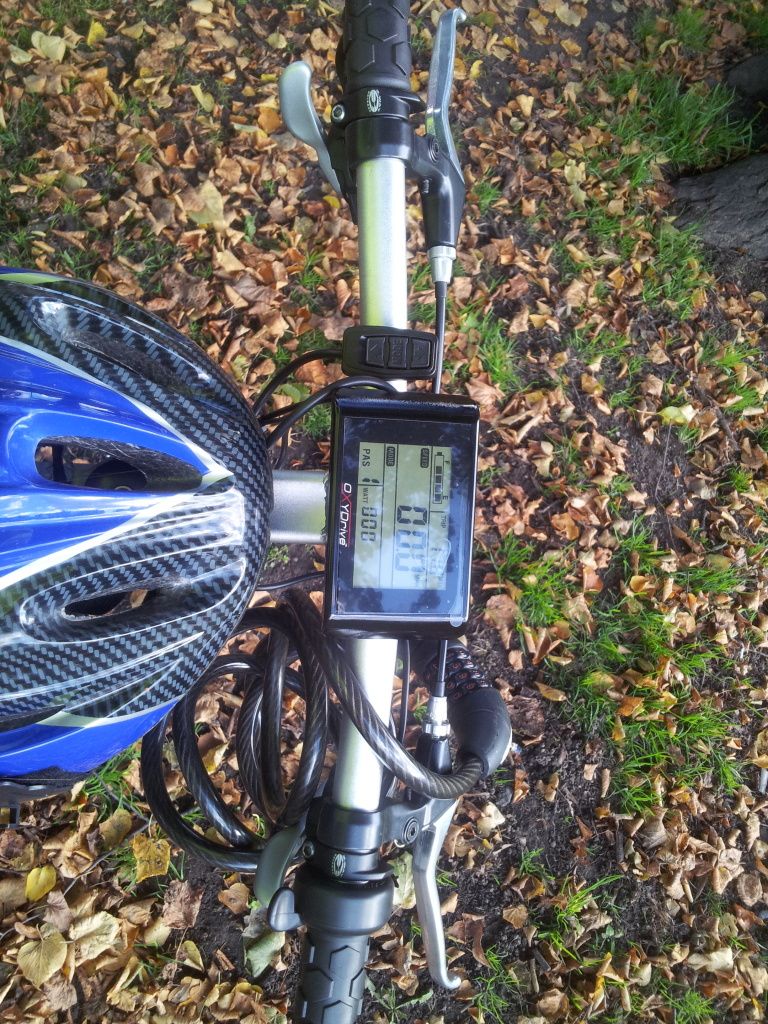
The only other problem was the bracket that holds the wiring manifold, which fits on the steerer tube. The hole was just a little too small, so I had to run round it a couple of times with my Dremmel to open up the hole to make it fit. . Normally it would just be a case of lifting your stem and handlebars and sliding it on. When on, the manifold was a bit low, so I drilled another hole in the bracket to lift it up a bit.
After that it was a simple case of tying down all the wiring. This is a well organised kit with moulded connectors everywhere and no external controller box to hide too long wires, which means that the excess wire has to be carefully folded and tucked at the bottom of the battery.
So I was finally finished. I fetched the battery and tried to clip it in - woops! The top end clips in from the top, so you need frame clearance above it. After a bit of fiddling about, I found the correct angle to clip the battery in, Phew!
I fired it up and everything worked as it should. The motor was very free-running immediately. No initial friction from the seals/whatever that you normally get with a hub-motor. A quck ride around the block showed a speed limit of 15mph, where the motor cuts as soon as you're faster and comes back in when the speed comes back down. So I got the meter manual out and re-set the max speed limit to 40kph.
OXYDrive - electric bike conversion kit
OXYDRIVE electric bike kit what's inside the box.wmv - YouTube
I had a spare frame lying round off a Specialized Rockhopper Pro off which I had stripped everything to make my Giant NRS. I also had a new pair of Rockshox Dart 3 forks and a few other bits and pieces. I managed to find some used Deore XT mechs, chain and changers locally for £90, so I then had enough to get started.
First step was to fit the motor in the forks. The forks have 9mm drop-outs so I had to widen them a bit woth my Dremmel and I chose to deepen them a bit to re-centralise the axle. When I tested it, it span freely, but I could hear a ticking noice, which was the motor just touching the fork leg. This wouldn't have happened if I hadn't deepened the drop-outs so far. Solved by making a 0.5mmwasher, which kept the leg clear.

The rest of the installation was very straight-forward. I had a 113mm BB assy, but when I tried it there wasn't room for the magnet disk, so a quick trip to Halfords and I had a 122mm one for £10. I got some pedals there while I was at it (£14)
Next, where to put the throttle. I tried lots of positions, but none were idea. Then I realised that the gear indicators on the changers were removable, which gave a perfect solution with the throttle right next to the grip.

The only other problem was the bracket that holds the wiring manifold, which fits on the steerer tube. The hole was just a little too small, so I had to run round it a couple of times with my Dremmel to open up the hole to make it fit. . Normally it would just be a case of lifting your stem and handlebars and sliding it on. When on, the manifold was a bit low, so I drilled another hole in the bracket to lift it up a bit.
After that it was a simple case of tying down all the wiring. This is a well organised kit with moulded connectors everywhere and no external controller box to hide too long wires, which means that the excess wire has to be carefully folded and tucked at the bottom of the battery.
So I was finally finished. I fetched the battery and tried to clip it in - woops! The top end clips in from the top, so you need frame clearance above it. After a bit of fiddling about, I found the correct angle to clip the battery in, Phew!
I fired it up and everything worked as it should. The motor was very free-running immediately. No initial friction from the seals/whatever that you normally get with a hub-motor. A quck ride around the block showed a speed limit of 15mph, where the motor cuts as soon as you're faster and comes back in when the speed comes back down. So I got the meter manual out and re-set the max speed limit to 40kph.
Last edited by a moderator:


